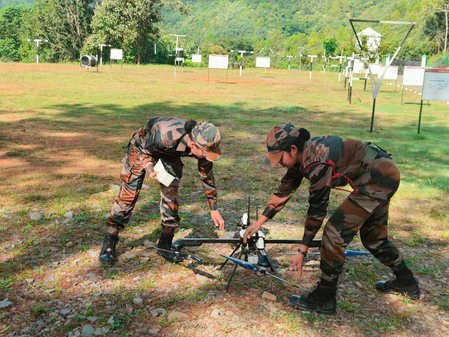Drone operations training held to enhance Assam Rifles’ capabilities
Guwahati, Nov 8 (IANS) A focused training programme on drone integration and operations was organised to enhance the operational readiness of Assam Rifles personnel, officials said on Saturday.
Defence spokesman Lt Col Mahendra Rawat said that the initiative aimed at strengthening the use of Unmanned Aerial Systems (UAS) for surveillance, reconnaissance, and real-time situational awareness in field conditions.
The training included modules on mission planning, data interpretation and drone handling techniques, enabling participants to develop greater technical proficiency and adaptability, he said.
The course also emphasised the importance of precision, safety and coordinated teamwork during aerial operations.
According to the spokesman, the initiative reflects Assam Rifles’ commitment to embracing modern technology as a force multiplier in its mission of ensuring peace, stability and security across the Northeast region.
Through continued emphasis on skill development and innovation, the para-military force continues to evolve in line with emerging operational demands.
The defence spokesman said that by investing in such forward-looking training programmes, Assam Rifles reaffirms its dedication to maintaining high professional standards and operational excellence, while remaining steadfast in its role as the “Sentinels of the North East.”
Meanwhile, to bolster its preparedness for dynamic operational environments, the military hospital at Tezu in the Lohit district of Arunachal Pradesh successfully conducted a comprehensive Casualty Management Drill under Blackout in Tezu.
The exercise was specifically designed to simulate a real-world scenario where medical teams must manage casualties under challenging, low-visibility conditions, Lt Col Rawat said.
The primary objective of the drill was to test the unit’s efficiency, coordination and adherence to standard operating procedures (SOPs) during a crisis. Under simulated combat stress and complete blackout conditions, the hospital staff and support personnel meticulously practised every stage of the casualty evacuation chain.
The spokesman said that key components of the exercise included the rapid and safe carriage of simulated casualties from the incident site, the provision of immediate, life-saving field treatment and the subsequent seamless evacuation to the main hospital facility.
The focus remained squarely on minimising the time gap between injury and definitive medical care, he said.
–IANS
sc/dan



Comments are closed.